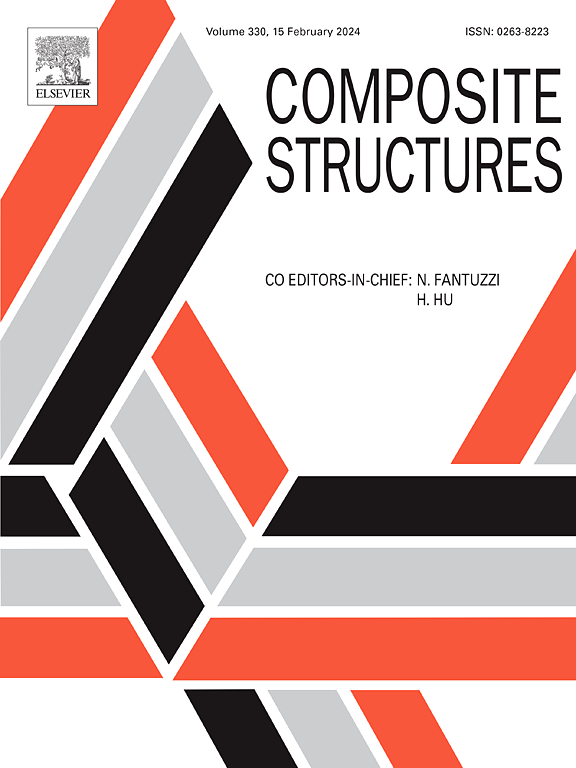Topology optimization of hard-magnetic soft laminates for wide tunable SH wave bandgaps
IF 6.3
2区 材料科学
Q1 MATERIALS SCIENCE, COMPOSITES
引用次数: 0
Abstract
The periodic laminates made of hard-magnetic soft materials (HMSMs) have recently received increasing attention due to their tunable phononic bandgap characteristics—ranges of frequencies at which sound and vibrations cannot propagate, which can be controlled remotely through magnetically induced finite deformations. In this work, we present a gradient-based topology optimization framework for determining the optimum distribution of laminate phases to optimize the anti-plane shear wave (SH wave) bandgap characteristics. In particular, by employing the method of moving asymptotes (MMA), we maximize the bandgap width when the laminate is subjected to external magnetic fields. The Gent material model of hyperelasticity, in conjunction with the ideal HMSMs model, is used to describe the constitutive response of the laminate phases. To extract the band structure of the hard-magnetic soft laminate, we employ an in-house finite element model. To demonstrate the capability of the developed numerical framework, a parametric study exploring the effect of the applied external magnetic field on the optimized bandgap characteristics and the design of the periodic laminated composite unit cell is presented. The optimization framework presented in this study will be helpful in the design and development of futuristic tunable wave manipulators.
宽可调SH波带隙硬磁软层板的拓扑优化
由硬磁软材料(HMSMs)制成的周期性层压板最近受到越来越多的关注,因为它们具有可调谐的声子带隙特性-在该频率范围内声音和振动不能传播,可以通过磁诱导有限变形远程控制。在这项工作中,我们提出了一个基于梯度的拓扑优化框架,用于确定层合相的最佳分布,以优化反平面横波(SH波)带隙特性。特别地,我们利用移动渐近线(MMA)的方法,使层压板在外加磁场作用下的带隙宽度最大化。采用Gent超弹性材料模型,结合理想HMSMs模型来描述层合相的本构响应。为了提取软磁层合板的能带结构,我们采用了内部有限元模型。为了验证所开发的数值框架的能力,提出了一项参数化研究,探讨了外加磁场对优化带隙特性和周期性层压复合材料单元电池设计的影响。本文提出的优化框架将有助于未来可调谐波浪操纵器的设计和开发。
本文章由计算机程序翻译,如有差异,请以英文原文为准。
求助全文
约1分钟内获得全文
求助全文
来源期刊

Composite Structures
工程技术-材料科学:复合
CiteScore
12.00
自引率
12.70%
发文量
1246
审稿时长
78 days
期刊介绍:
The past few decades have seen outstanding advances in the use of composite materials in structural applications. There can be little doubt that, within engineering circles, composites have revolutionised traditional design concepts and made possible an unparalleled range of new and exciting possibilities as viable materials for construction. Composite Structures, an International Journal, disseminates knowledge between users, manufacturers, designers and researchers involved in structures or structural components manufactured using composite materials.
The journal publishes papers which contribute to knowledge in the use of composite materials in engineering structures. Papers deal with design, research and development studies, experimental investigations, theoretical analysis and fabrication techniques relevant to the application of composites in load-bearing components for assemblies, ranging from individual components such as plates and shells to complete composite structures.
 求助内容:
求助内容: 应助结果提醒方式:
应助结果提醒方式:


